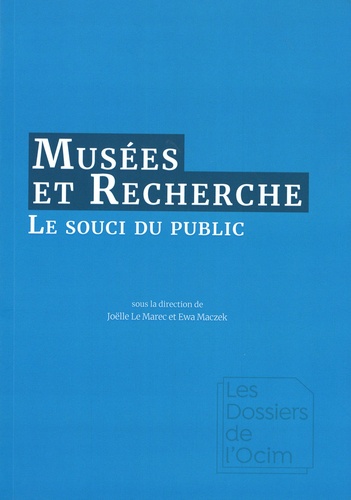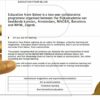This text is licensed under the Creative Commons license Attribution-NonCommercial-ShareAlike 4.0 International. The link to the original material is situated at the top right of the text.

Le souci du public (Taking care of audiences)
Joëlle Le Marec and Ewa Maczek
2020
Keywords: museum, audiences, care, reflexivity
Threads: Remembering, Cooperating with(in) arts and culture, Inquiring
Short description
It is therefore structured with an inaugural chapter and eleven contributions from academic authors and professionals from the museum and library fields. They present and analyse initiatives that consist of working with audiences, reconsidering their points of view, taking care of them but also, and above all, questioning the reasons for working with audiences and questioning what we share with them, in particular as an audience ourselves. The notion of care (developed by Carole Gilligan 1982) is mobilized throughout the book. It refers to another consideration of politics as being exercised where the care of others is felt and where responsibility is taken for what one does for and with others. The audience is therefore the political condition that continually makes the ethics of care vivid at the heart of public service institutions.
Personal appreciation
Contribution to the "Who knows?" handbook
Material(s)
Additional Information
| Location | France |
| Original language(s) | French |
| Existing translations | |
| Length | 193 pages |
| Project runtime | - |
| Institution of affiliation | Museum of natural history, Paris Office de cooperation et d’information museal, OCIM, Dijon |
| Sponsor(s) |
Additional Pictures
Creative Commons
Related Contributions

Roundtable: Undoing Discrimination? Diverse in Berlin?
Kenny Fries, Sanni Est, Miriam Camara, Rhea Ramjohn
Moderation: Samie Blasingame
2021
Are diversity measures in cultural institutions just another set of methods of solidifying what they claim to change? What are the inconspicuous formal routines, the small informal habits, the official and unofficial rules that create the feeling of running into a wall that one claims is not there?

Education from below
Rijksakademie van beeldende kunsten, PEI at MACBA, and WHW Akademija
2019
The project recognises that art practices can dislocate the usual hierarchies of what should or should not be learned and that knowledge does not have to be based on accumulation, but rather on sharing and mutual learning.







